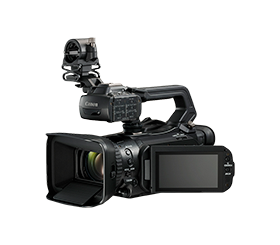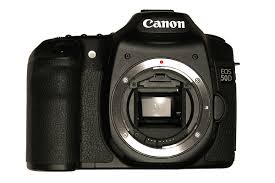Eos Digital Solution Disk Download Mac
Disclaimer
- Eos Digital Solution Disk Download Mac
- Canon Eos Solutions Disk
- Eos Digital Solution Disk Download Mac Catalina
- Canon Digital Solutions Software Download
- Eos Digital Software
All software, programs (including but not limited to drivers), files, documents, manuals, instructions or any other materials (collectively, “Content”) are made available on this site on an 'as is' basis.
Canon's EOS 77D takes the sensor and autofocus system from the more expensive 80D, adds a newer processor, and packs them all into a lighter body for less money. Find out how it all adds up in our full review. Changes from EOS Digital Solution Disk Software 29.0A for Mac OS X are as follows: Changes from Digital Photo Professional 3.14.0: - Supports EOS 7D Mark II. A function to delete the shooting data when executing Convert and save has been added. Download Canon EOS Digital Solution Disk Software - The Canon software suite dedicated for those of you who cannot use the bundled CD to install the suite to the PC for various reasons. Page 1 INSTRUCTION MANUAL The “Quick Reference Guide” is included at the end of this manual.; Page 2: Introduction Introduction The EOS REBEL T5i/EOS 700D is a high-performance, digital single- lens reflex camera featuring a fine-detail CMOS sensor with approx. 18.00 effective megapixels, DIGIC 5, high-precision and high-speed 9-point AF, approx. 5 fps continuous shooting, Live View.
Canon Singapore Pte. Ltd., and its affiliate companies (“Canon”) make no guarantee of any kind with regard to the Content, expressly disclaims all warranties, expressed or implied (including, without limitation, implied warranties of merchantability, fitness for a particular purpose and non-infringement) and shall not be responsible for updating, correcting or supporting the Content.
Canon reserves all relevant title, ownership and intellectual property rights in the Content. You may download and use the Content solely for your personal, non-commercial use and at your own risks. Canon shall not be held liable for any damages whatsoever in connection with the Content, (including, without limitation, indirect, consequential, exemplary or incidental damages).
You shall not distribute, assign, license, sell, rent, broadcast, transmit, publish or transfer the Content to any other party. You shall also not (and shall not let others) reproduce, modify, reformat, disassemble, decompile or otherwise reverse engineer or create derivative works from the Content, in whole or in part.
You agree not to send or bring the Content out of the country/region where you originally obtained it to other countries/regions without any required authorization of the applicable governments and/or in violation of any laws, restrictions and regulations.
By proceeding to downloading the Content, you agree to be bound by the above as well as all laws and regulations applicable to your download and use of the Content.

7.1
July 7, 2019
PhotoRec is file data recovery software designed to recover lost files including video, documents and archives from hard disks, CD-ROMs, and lost pictures (thus the Photo Recovery name) from digital camera memory. PhotoRec ignores the file system and goes after the underlying data, so it will still work even if your media's file system has been severely damaged or reformatted.
PhotoRec is free - this open source multi-platform application is distributed under GNU General Public License (GPLV v2+). PhotoRec is a companion program to TestDisk, an application for recovering lost partitions on a wide variety of file systems and making non-bootable disks bootable again.You can download them from this link.
For more safety, PhotoRec uses read-only access to handle the drive or memory card you are about to recover lost data from.Important: As soon as a picture or file is accidentally deleted, or you discover any missing, do NOT save any more pictures or files to that memory device or hard disk drive; otherwise you may overwrite your lost data. This means that while using PhotoRec, you must not choose to write the recovered files to the same partition they were stored on.
Operating systems
PhotoRec runs under

- DOS/Windows 9x
- Windows 10/8.1/8/7/Vista/XP, Windows Server 2016/2012/2008/2003
- Linux
- FreeBSD, NetBSD, OpenBSD
- Sun Solaris
- Mac OS X
and can be compiled on almost every Unix system.
File systems
PhotoRec ignores the file system; this way it works even if the file system is severely damaged.
It can recover lost files from at least
- FAT
- NTFS
- exFAT
- ext2/ext3/ext4 filesystem
- HFS+
ReiserFS includes some special optimizations centered around tails, a name for files and end portions of files that are smaller than a filesystem block. In order to increase performance, ReiserFS is able to store files inside the b*tree leaf nodes themselves, rather than storing the data somewhere else on the disk and pointing to it. Unfortunately, PhotoRec isn't able to deal with this - that's why it doesn't work well with ReiserFS.
Media
PhotoRec works with hard disks, CD-ROMs, memory cards (CompactFlash, Memory Stick, Secure Digital/SD, SmartMedia, Microdrive, MMC, etc.), USB memory drives, DD raw image, EnCase E01 image, etc.
PhotoRec has been successfully tested with various portable media players including iPod and the following Digital Cameras:

- Canon EOS 10D, 60D, 80D, 300D
- Casio Exilim EX-Z 750
- Fujifilm X-T10
- HP PhotoSmart 620, 850, 935
- Nikon CoolPix 775, 950, 5700
- Olympus C350N, C860L, Mju 400 Digital, Stylus 300
- Sony Alpha DSLR, DSC-P9, NEX-6
- Pentax K20D
- Praktica DCZ-3.4
Known file formats
PhotoRec searches for known file headers. If there is no data fragmentation, which is often the case, it can recover the whole file.PhotoRec recognizes and recovers numerous file formats including ZIP, Office, PDF, HTML, JPEG and various graphics file formats.The whole list of file formats recovered by PhotoRec contains more than 480 file extensions (about 300 file families).
Want to know if PhotoRec can recover your files ? Upload a sample file via the PhotoRec online checker (BETA).
How PhotoRec works
FAT, NTFS, ext2/ext3/ext4 file systems store files in data blocks (also called clusters under Windows). The cluster or block size remains at a constant number of sectors after being initialized during the formatting of the file system. In general, most operating systems try to store the data in a contiguous way so as to minimize data fragmentation. The seek time of mechanical drives is significant for writing and reading data to/from a hard disk, so that's why it's important to keep the fragmentation to a minimum level.
When a file is deleted, the meta-information about this file (file name, date/time, size, location of the first data block/cluster, etc.) is lost; for example, in an ext3/ext4 file system, the names of deleted files are still present, but the location of the first data block is removed. This means the data is still present on the file system, but only until some or all of it is overwritten by new file data.
To recover these lost files, PhotoRec first tries to find the data block (or cluster) size. If the file system is not corrupted, this value can be read from the superblock (ext2/ext3/ext4) or volume boot record (FAT, NTFS). Otherwise, PhotoRec reads the media, sector by sector, searching for the first ten files, from which it calculates the block/cluster size from their locations. Once this block size is known, PhotoRec reads the media block by block (or cluster by cluster). Each block is checked against a signature database which comes with the program and has grown in the type of files it can recover ever since PhotoRec's first version came out.
For example, PhotoRec identifies a JPEG file when a block begins with:
- 0xff, 0xd8, 0xff, 0xe0
- 0xff, 0xd8, 0xff, 0xe1
- or 0xff, 0xd8, 0xff, 0xfe
If PhotoRec has already started to recover a file, it stops its recovery, checks the consistency of the file when possible and starts to save the new file (which it determined from the signature it found).
If the data is not fragmented, the recovered file should be either identical to or larger than the original file in size. In some cases, PhotoRec can learn the original file size from the file header, so the recovered file is truncated to the correct size. If, however, the recovered file ends up being smaller than its header specifies, it is discarded. Some files, such as *.MP3 types, are data streams. In this case, PhotoRec parses the recovered data, then stops the recovery when the stream ends.
When a file is recovered successfully, PhotoRec checks the previous data blocks to see if a file signature was found but the file wasn't able to be successfully recovered (that is, the file was too small), and it tries again. This way, some fragmented files can be successfully recovered.
Eos Digital Solution Disk Download Mac
Other topics
- testdisk.pdf More than 60 pages about data recovery using TestDisk & PhotoRec and other tools
- After Using PhotoRec: Some ideas to sort recovered files
- Scripted run: Running PhotoRec without user interaction (Batch mode).
- Developers How to contribute code to TestDisk & PhotoRec
Problems?
Canon Eos Solutions Disk

Don't hesitate to visit the PhotoRec forum if you have
- some difficulties using PhotoRec,
- some ideas to improve it
Eos Digital Solution Disk Download Mac Catalina
If there is a file format you would like to be added, feel free to contact the developer Christophe GRENIER.
Canon Digital Solutions Software Download
